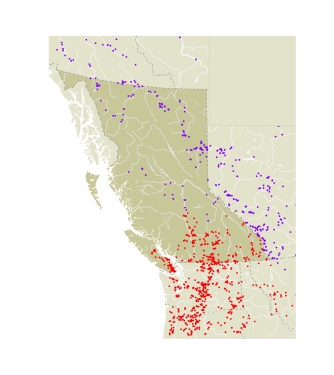AdultFor the Silvery Blue the upperside of the male wing is a "silvery" blue with a narrower black border than the Arrowhead Blue. The ground colour of the upperside of the female wings is brown, with a flush of blue scales at the base. Neither sex has any orange markings. The underside of the Silvery Blue is very diagnostic. The ground colour is a uniform light brown with strongly contrasting black spots bordered by white. There is no mottling or other variation to the uniform ground colour.
Immature StagesBoth Bower (1911) in the east and Williams (1908) described the immatures. Bower gave the best account. The egg is turban-shaped. It is green and the white chorion has a reticulated surface. The egg turns white before hatching. The mature larva is light green and covered with a granulated surface of white dots. The dorsal line is dark green, edged with light yellow green. The subspiracular line is conspicuously cream, edged with dark green.
SubspeciesPopulations in southern BC are the subspecies G.l. columbia (Skinner, 1917) (TL: Fort Columbia, [Okanogan Co.], WA). Northern populations are the boreal subspecies, G.l. couperi Grote, 1873 (TL: Anticosti Island, PQ). The northern subspecies is smaller.
